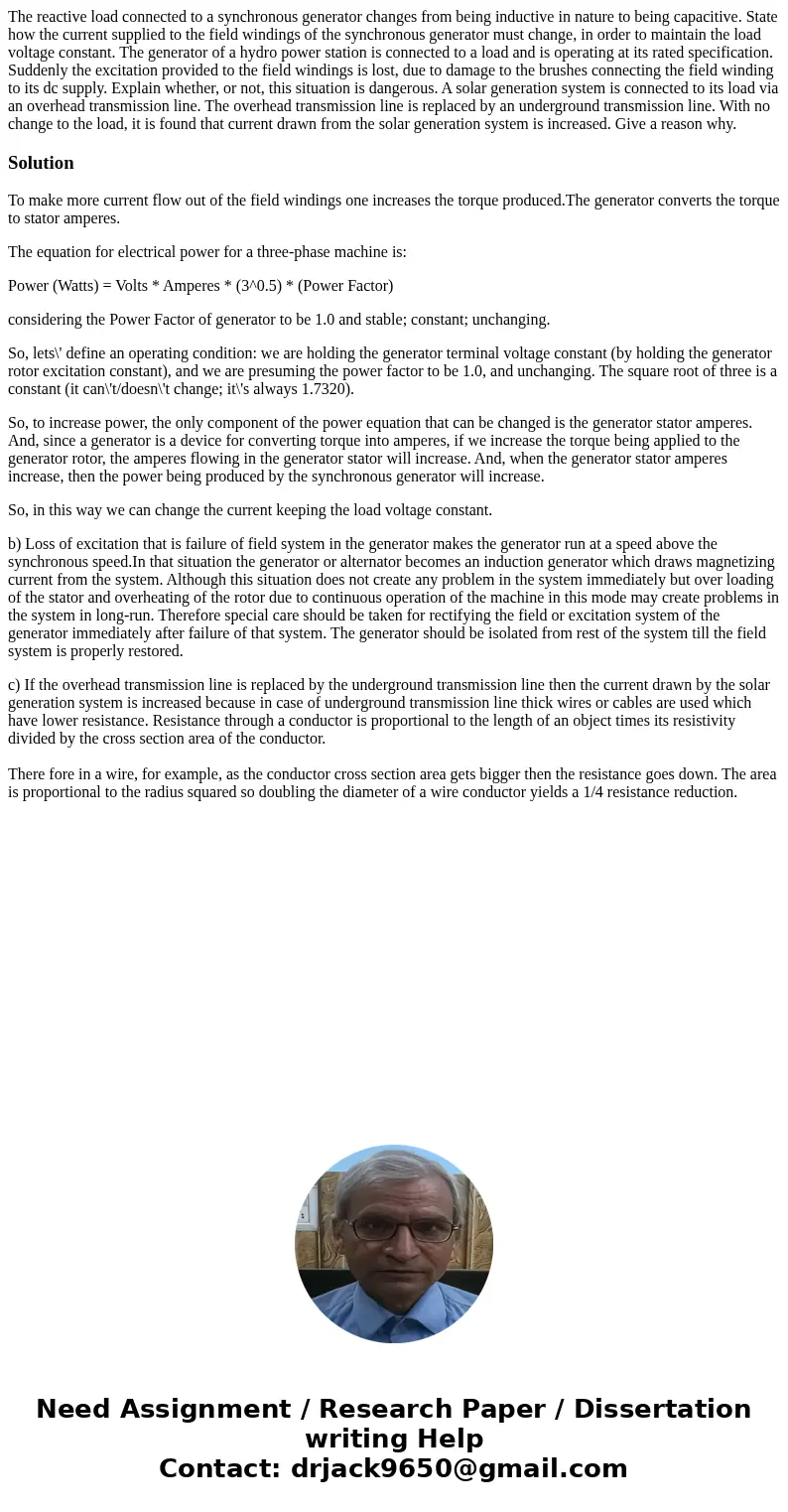The reactive load connected to a synchronous generator chang
Solution
To make more current flow out of the field windings one increases the torque produced.The generator converts the torque to stator amperes.
The equation for electrical power for a three-phase machine is:
Power (Watts) = Volts * Amperes * (3^0.5) * (Power Factor)
considering the Power Factor of generator to be 1.0 and stable; constant; unchanging.
So, lets\' define an operating condition: we are holding the generator terminal voltage constant (by holding the generator rotor excitation constant), and we are presuming the power factor to be 1.0, and unchanging. The square root of three is a constant (it can\'t/doesn\'t change; it\'s always 1.7320).
So, to increase power, the only component of the power equation that can be changed is the generator stator amperes. And, since a generator is a device for converting torque into amperes, if we increase the torque being applied to the generator rotor, the amperes flowing in the generator stator will increase. And, when the generator stator amperes increase, then the power being produced by the synchronous generator will increase.
So, in this way we can change the current keeping the load voltage constant.
b) Loss of excitation that is failure of field system in the generator makes the generator run at a speed above the synchronous speed.In that situation the generator or alternator becomes an induction generator which draws magnetizing current from the system. Although this situation does not create any problem in the system immediately but over loading of the stator and overheating of the rotor due to continuous operation of the machine in this mode may create problems in the system in long-run. Therefore special care should be taken for rectifying the field or excitation system of the generator immediately after failure of that system. The generator should be isolated from rest of the system till the field system is properly restored.
c) If the overhead transmission line is replaced by the underground transmission line then the current drawn by the solar generation system is increased because in case of underground transmission line thick wires or cables are used which have lower resistance. Resistance through a conductor is proportional to the length of an object times its resistivity divided by the cross section area of the conductor.
There fore in a wire, for example, as the conductor cross section area gets bigger then the resistance goes down. The area is proportional to the radius squared so doubling the diameter of a wire conductor yields a 1/4 resistance reduction.

 Homework Sourse
Homework Sourse